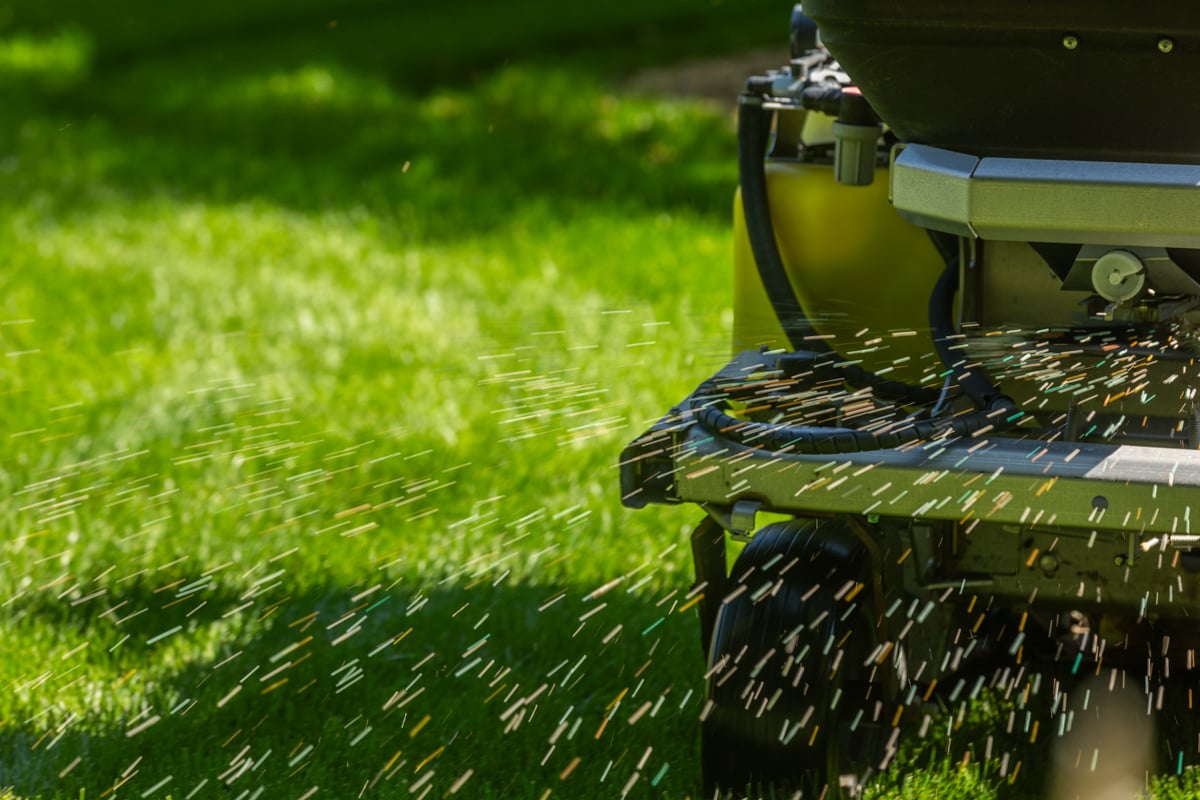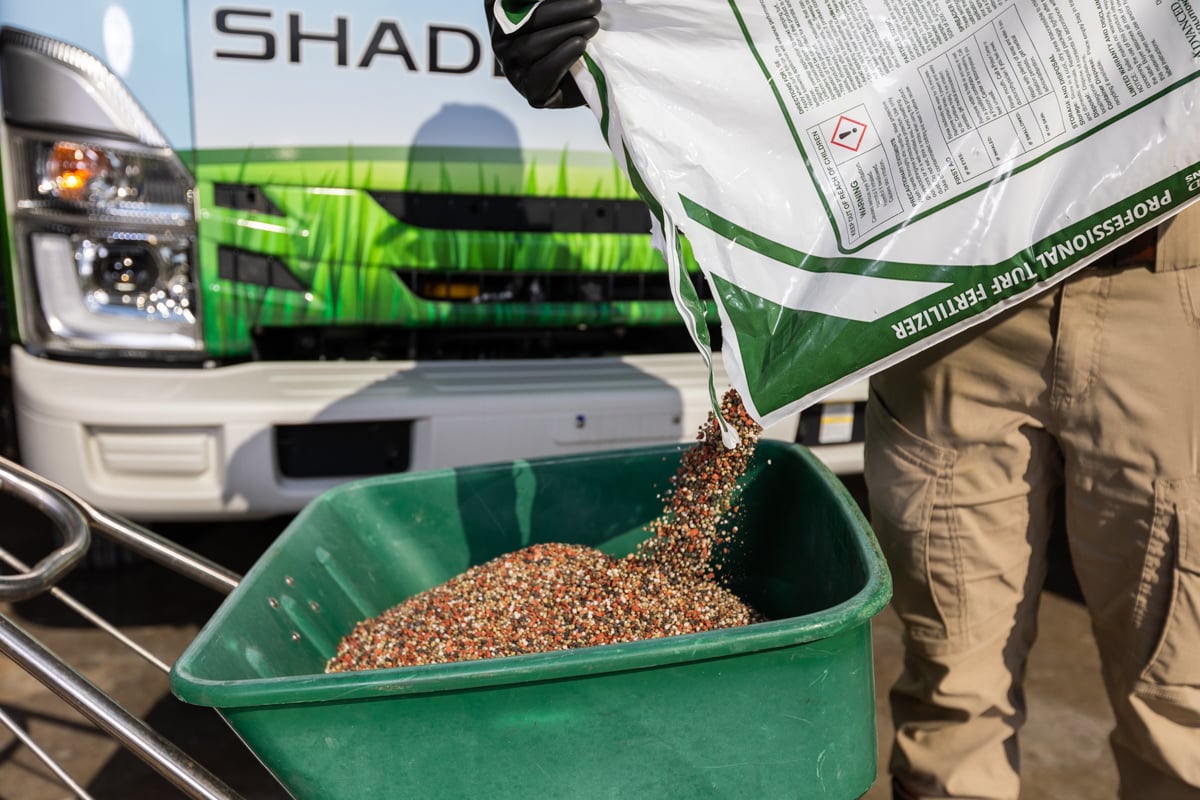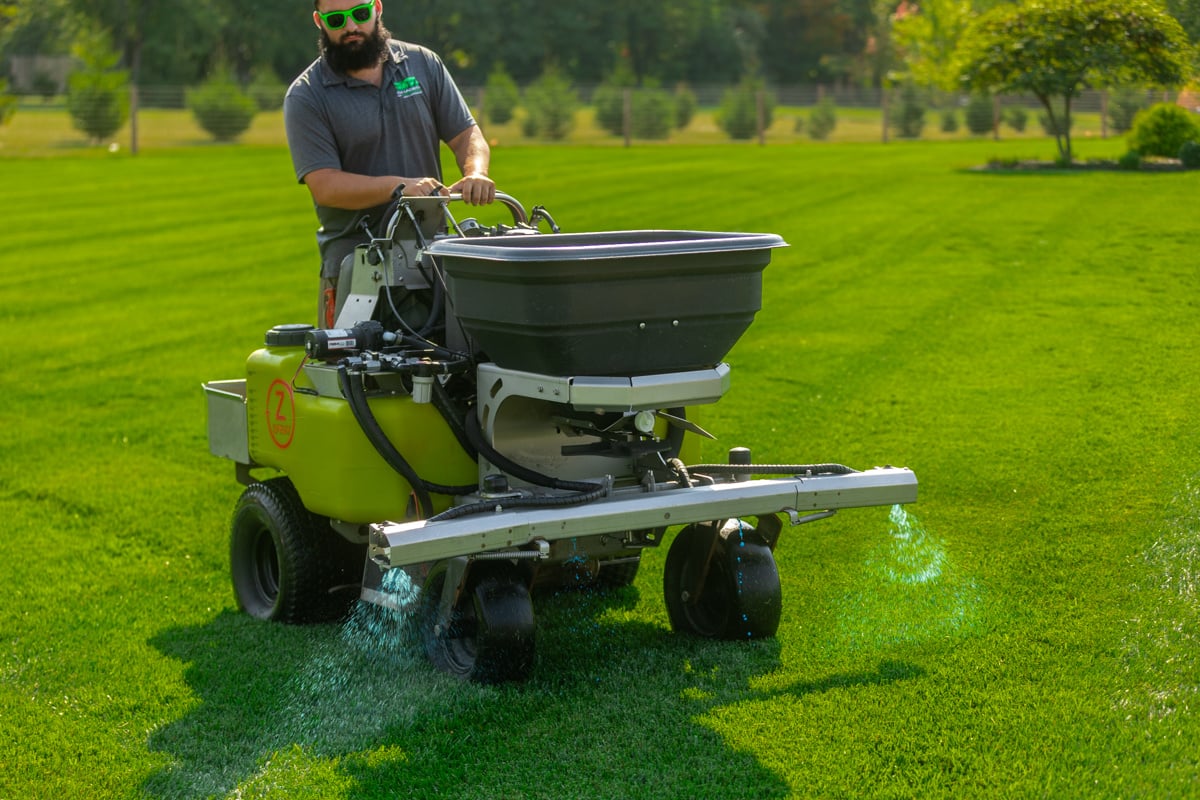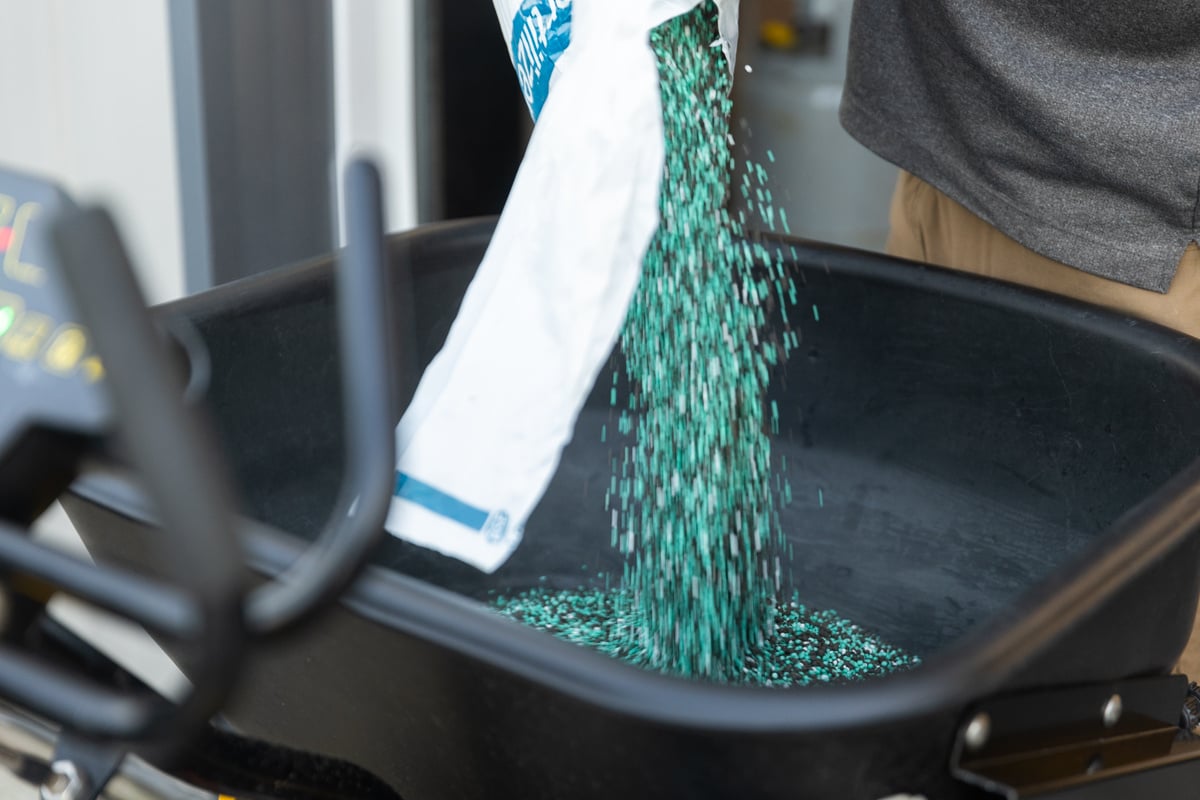



You’ve worked hard all summer long to keep your lawn looking great, and now you’re thinking ahead to spring. But what in the world is winterizer, and do you really need it? Is one more application in the fall worth the effort or the cost?
Lawn winterizer is your lawn’s final nutrient boost before dormancy. It is an absolutely essential step in giving your lawn the foundation it needs to bounce back after winter.
Let’s break down:
What Winter Fertilizer Is
Timing Winterizer Application
Benefits of Winter Fertilizer
What You Need to Know for Best Results
Partnering with a Professional for Winter Fertilizer
Winter fertilizer is essentially your lawn’s final meal for the year. It’s the last application of your fertilization program and is designed to help your grass store energy and build strong roots during the cooler months. Think of it as a preparation plan for spring that gives your lawn the foundation it needs to bounce back after a long winter.
Contrary to what the name suggests, winter fertilizer does not involve applying chemicals on top of snow or during freezing temperatures. Instead, it is applied in late fall, before your grass goes dormant, while the soil is still workable and your lawn can absorb nutrients well. This timing ensures your grass is set up to emerge healthy, green, and strong once warmer temperatures return.
In Indiana, winterizer is the final step in a series of fall lawn applications designed to set your grass up for success. In our typical program, your lawn receives three fall treatments:
 Timing is key, which is where a pro can really offer some guidance. Typically, winterizer fertilization is applied anytime after November 1st through December, depending on weather conditions. The soil needs to be workable so your lawn can absorb the nutrients, but grass is usually just entering dormancy, making this the perfect window for the final application.
Timing is key, which is where a pro can really offer some guidance. Typically, winterizer fertilization is applied anytime after November 1st through December, depending on weather conditions. The soil needs to be workable so your lawn can absorb the nutrients, but grass is usually just entering dormancy, making this the perfect window for the final application.
Applying winter fertilizer is a strategic task that sets your lawn up for long-term success.
Some of the key benefits include:
Winter fertilizer - or lawn winterizer - might sound a bit strange. After all, how can grass need feeding when it is dormant? The truth is that winterizer is a strategic tool that gives your lawn the nutrients it needs to survive winter and thrive in spring. To make sure it is effective, there are a few key things you should know.
Preparing your lawn for winter in Indiana is about more than just fertilizer. Go through these steps to ensure your lawn is ready for winter:

The winter months are not the time for active fertilization. When the ground is frozen or temperatures are low, grass is dormant and cannot absorb nutrients effectively. Applying fertilizer too early in the fall or on frozen soil can be wasted and create runoff that negatively impacts the environment.
Not all fertilizers provide the same nutrients for your grass. For late-fall lawn care, the goal isn’t slow, gradual feeding like some earlier-season applications. Instead, your lawn needs nutrients that it can store and use during dormancy.
Quick-release fertilizers, like ammonium sulfate or ammonical-based nitrogen, are preferred for winterization. Unlike urea, which requires warmer soil temperatures to break down and become available, ammonium-based fertilizers are immediately usable by the grass. Think of it like eating a hearty pasta meal before a race: your body stores what it needs to use later.
Application rates are important, too. For example, aiming for about 1 pound of nitrogen per 1,000 square feet ensures your lawn gets enough without waste. Using a quick-release fertilizer like a 32-0-5 blend makes it easy to calculate: one bag covers roughly 16,000 square feet when spread correctly.
Don’t worry about a few leaves left on the lawn or even a little fertilizer left from previous applications. For winterizer, a few leaves won’t hurt, and leftover slow-release fertilizer from summer isn’t effective this time of year, as it takes too long to break down.
Finally, we recommend pairing your fall lawn winterizer with a preemergent weed control application - it’s a total game changer. We are one of the few companies in the area that includes this step, giving lawns a head start against spring weeds while still building strong roots and storing energy.
Lawn winterizer is a key step in giving your lawn the nutrients it needs to thrive in the spring, but correct timing, product choice, and application rates make all the difference. Working with a professional ensures your lawn gets the right care at the right time, and that your full-season program, from fertilization to aeration, is optimized for best results.
At Shades of Green, we tailor every lawn program to our area and climate, which means your lawn is ready to shine when spring arrives.
Interested in learning more about lawn care services? Get started today by filling out our contact form.

Cory is the heart and soul of Shades of Green. His dedication to doing right for our customers has been the driving force behind the company's success. With a degree in Turf Science from Purdue University, Cory continually strives to craft the best treatment plans using the latest technologies and innovative products, ensuring top-notch results for every client.





